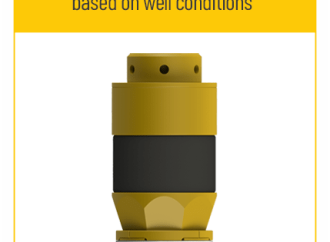Are you curious about the differences between US regional banks and big banks when it comes to managing their cash reserves? With so many financial institutions out there, it can be tough to distinguish between them. However, understanding how they handle their cash reserves is crucial in determining which bank might be best for your
Are you curious about the differences between US regional banks and big banks when it comes to managing their cash reserves? With so many financial institutions out there, it can be tough to distinguish between them. However, understanding how they handle their cash reserves is crucial in determining which bank might be best for your needs. In this blog post, we’ll explore the key disparities that exist between these two types of banking institutions and provide insights into how they manage their funds. So buckle up, get ready to learn something new, and let’s dive into the world of US regional banks vs big banks!
What is a regional bank?
A regional bank is a bank that serves a specific geographic region. These banks are typically much smaller than national banks and offer services to both businesses and consumers within their service area. Because they are smaller, regional banks often have a more personal touch than larger banks and can provide more personalized service. Regional banks typically offer a full range of banking services, including savings and checking accounts, loans, and investment products.
What is a big bank?
There are several types of banks in the United States, but the two main categories are regional banks and big banks. Both types of institutions offer similar services, but there are some key differences between them. Perhaps the most notable difference is that big banks have significantly more resources than regional banks. This allows them to offer a wider range of products and services, as well as provide more comprehensive customer service. Big banks also tend to be more diversified, which can provide stability during economic downturns.
While big banks may have more advantages than regional banks, they also come with some disadvantages. First and foremost, big banks are much more complex than regional banks, which can make them more difficult to manage effectively. They also tend to be less personal, which can be frustrating for customers who prefer a more intimate banking experience. Finally, because they are so large, big banks are often subject to stricter government regulation than regional banks.
The difference in managing cash reserves between regional banks and big banks
Regional banks typically have a more centralized approach to managing cash reserves than big banks. Regional banks typically have one or two central locations where all cash is managed, while big banks often have multiple locations where cash is managed. This can make it more difficult for big banks to keep track of their cash reserves and make decisions about how to invest them.
Regional banks also tend to be more focused on short-term goals than big banks. This means that they are more likely to invest in things like Treasury bills and other short-term investments. Big banks, on the other hand, often have longer-term goals and may invest in things like corporate bonds and other long-term investments.
The difference in focus can also lead to different strategies for managing cash reserves. Regional banks may be more likely to hold onto cash reserves and use them to cover unexpected expenses, while big banks may be more likely to invest cash reserves in order to earn a return on investment.
Why regional banks are important
Regional banks are important because they provide critical banking services to smaller communities that might not otherwise have access to them. They also play a vital role in supporting the local economy by providing loans and other financial services to small businesses. In addition, regional banks typically have lower fees and interest rates than large banks, making them a more affordable option for consumers and businesses.
How to choose the right regional bank for you
When it comes to choosing a regional bank, there are a few things you should take into account. First, consider your specific banking needs and what type of services the regional bank offers. For example, if you’re looking for a bank that has branches in multiple states, then a regional bank may not be the best fit. Secondly, research the fees associated with the regional bank. Some regional banks may have higher fees than others, so it’s important to compare and contrast before making a decision. Finally, make sure to read reviews of the regional bank online to get an idea of what other customers think.
Conclusion
In conclusion, cash reserves and their management can be handled differently depending on whether the bank is a regional or big one. Regional banks are more likely to invest in local projects for their customers while big banks tend to diversify their investments in many different markets. Ultimately, it’s important for both sets of institutions to manage their cash reserves responsibly so as not to create risk for themselves and those who depend on them. With careful consideration of each institution’s size, customer base and investment strategy, we can ensure that our money is safe no matter where it goes.























Leave a Comment
Your email address will not be published. Required fields are marked with *